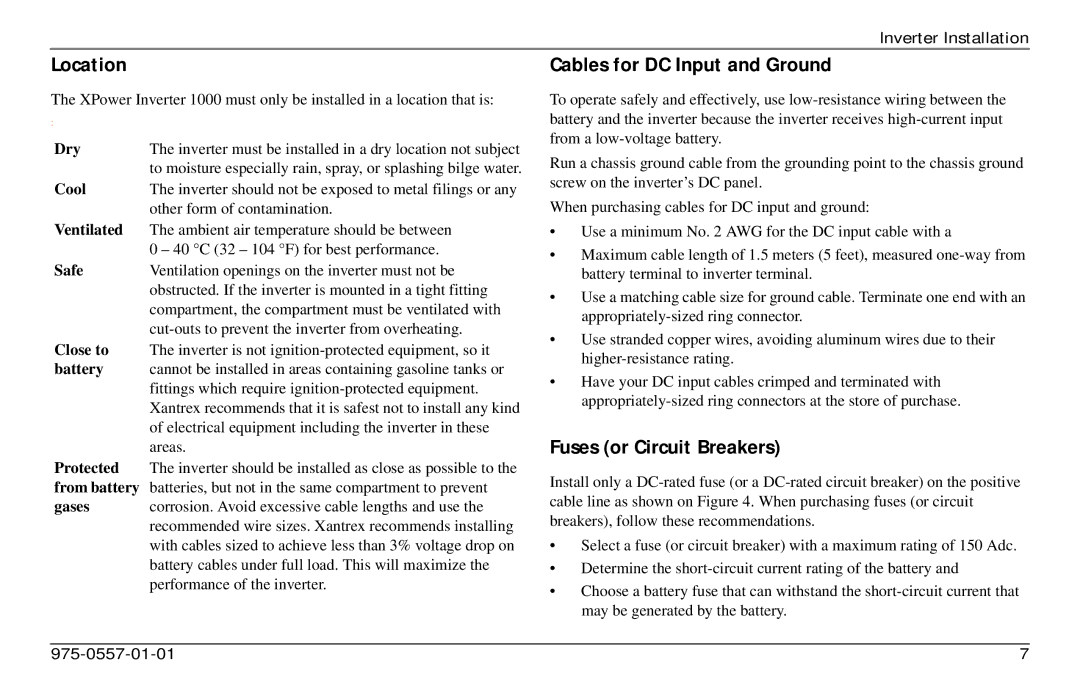Inverter Installation
Location
The XPower Inverter 1000 must only be installed in a location that is:
:
Dry | The inverter must be installed in a dry location not subject |
| to moisture especially rain, spray, or splashing bilge water. |
Cool | The inverter should not be exposed to metal filings or any |
| other form of contamination. |
Ventilated | The ambient air temperature should be between |
| 0 – 40 °C (32 – 104 °F) for best performance. |
Safe | Ventilation openings on the inverter must not be |
| obstructed. If the inverter is mounted in a tight fitting |
| compartment, the compartment must be ventilated with |
| |
Close to | The inverter is not |
battery | cannot be installed in areas containing gasoline tanks or |
| fittings which require |
| Xantrex recommends that it is safest not to install any kind |
| of electrical equipment including the inverter in these |
| areas. |
Protected The inverter should be installed as close as possible to the from battery batteries, but not in the same compartment to prevent
gases corrosion. Avoid excessive cable lengths and use the recommended wire sizes. Xantrex recommends installing with cables sized to achieve less than 3% voltage drop on battery cables under full load. This will maximize the performance of the inverter.
Cables for DC Input and Ground
To operate safely and effectively, use
Run a chassis ground cable from the grounding point to the chassis ground screw on the inverter’s DC panel.
When purchasing cables for DC input and ground:
•Use a minimum No. 2 AWG for the DC input cable with a
•Maximum cable length of 1.5 meters (5 feet), measured
•Use a matching cable size for ground cable. Terminate one end with an
•Use stranded copper wires, avoiding aluminum wires due to their
•Have your DC input cables crimped and terminated with
Fuses (or Circuit Breakers)
Install only a
•Select a fuse (or circuit breaker) with a maximum rating of 150 Adc.
•Determine the
•Choose a battery fuse that can withstand the
7 |
